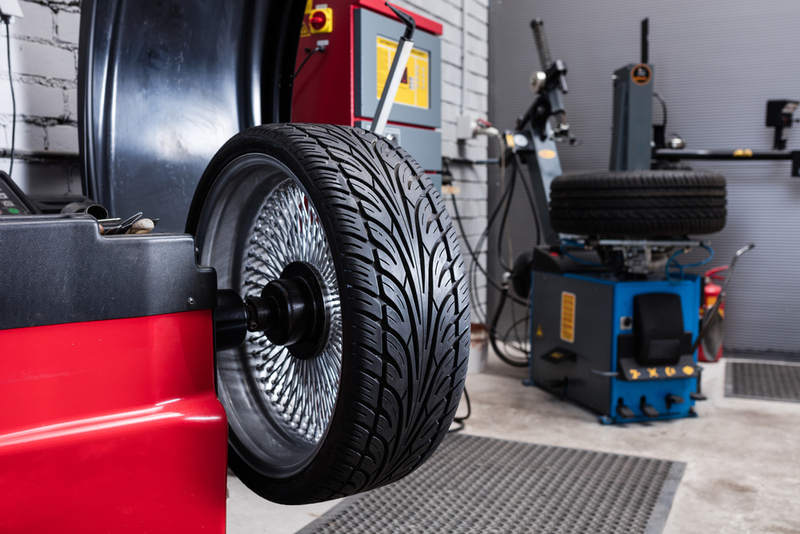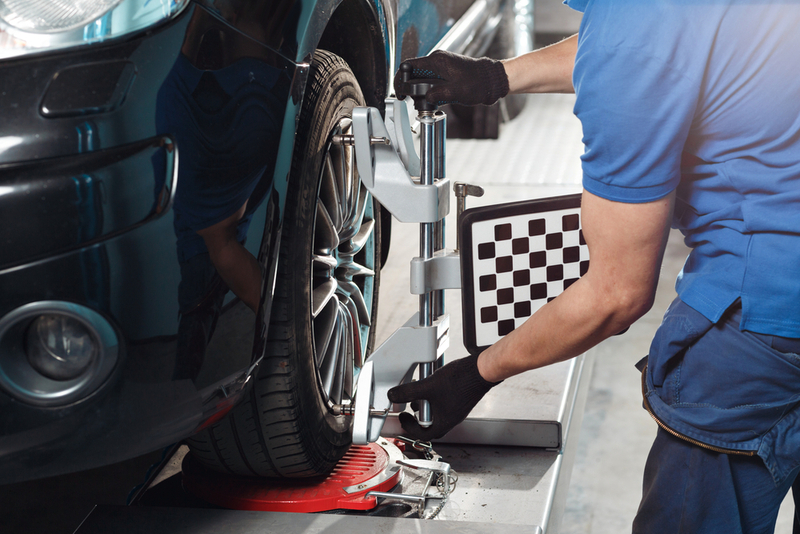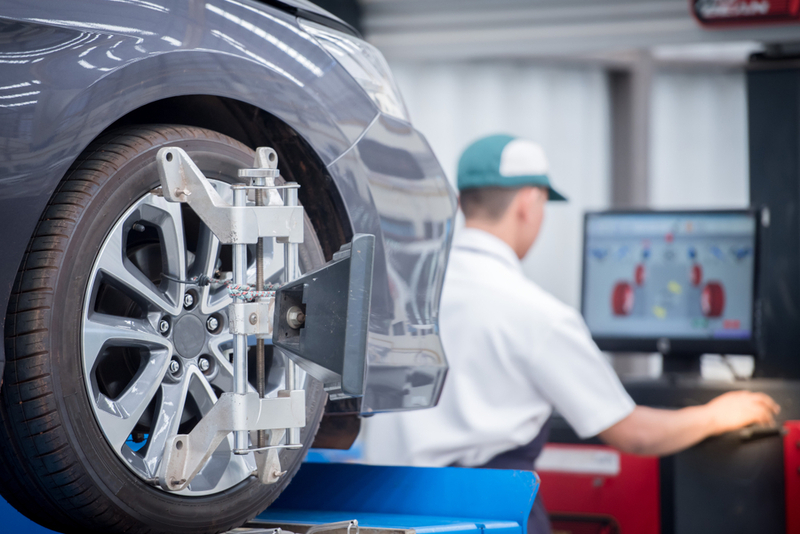Should I balance my tires before an alignment? This is a common question car owners asked on experiencing an unaligned wheel.
Whenever you experience excessive vibrations while driving on a smooth road, there is a high probability of a problem with your tires.
Even if the vibrations are not very pronounced and you only feel them in your steering wheel, it could still mean that your tires are either unbalanced or out of alignment.
This article will examine the tire balancing and wheel alignment processes to help you understand their importance and ways of rectifying the vibrations they cause.
Let’s get started!
Should I Balance My Tires Before an Alignment?
You don’t have to balance your tires before an alignment, it is totally your choice. They are two distinct services with distinct objectives. Tire adjusting is done to reestablish tire balance caused due to uneven wear etc. While your car’s tire alignment is so that they are in the “proper” position.
Tire balancing and wheel alignment are popular concepts in the automobile industry. These concepts are very similar, and they can easily confuse drivers.
Nevertheless, understanding the role of each concept in the suspension system is vital as they contribute immensely to the car’s overall performance.
You do not need to balance your tires before having a wheel alignment, and both can be done at different times and in different orders of arrangement.
It’s your choice, even if you want to do both simultaneously. However, if there are no symptoms of either wheel alignment or wheel balancing, then it will not make any sense to do a wheel balancing or wheel alignment, but it is always advisable to go for your routine checkups.
This section will examine each concept thoroughly and explain their differences.

What is Tire Balancing?
From a layman’s understanding, balancing is a concept that always pops up whenever weights are involved.
This line of thought is also viable even in the automobile industry, and one must understand that whenever they hear about tire balancing, it’s simply referring to creating an even weight distribution among all vehicle tires.
Normally, all tires produced for the same category are meant to weigh the same; however, despite advancements in technology and manufacturing processes, there are still variations in the tires’ weights.
If these tires, with their varying weights, are all attached to the wheels of any vehicle, they will cause excessive vibrations that will damage the system’s suspension.
Uneven weight distribution in the tires will also cause them to wobble and wear down quickly and irregularly.
This imbalance will also cause steering problems, and your steering wheel will vibrate and become rigid at sharp bends. To rectify the imbalance in vehicle tires, some professionals came up with the idea of using wheel balancing weights.
Wheel balancing weights are usually used as counterweights placed at the points of imbalance on the tire. But how do we find the points of imbalance on tires?
To find the point of imbalance on the tires, you must refit the tires with the recommended rim and pump to retire to its recommended pressure before installing a new valve.
How Is Tire Balancing Done
Once your tire is ready to be tested for imbalance, you must install it on the flywheel of the tire-testing machine and rotate it to a specific speed.
As the testing machine rotates, sensors pick up data that helps the testing machine find the point of imbalance.
Now that the point of imbalance has been found, a counterweight can be placed on those points on the tire before testing the tire again to ensure that the tire is balanced.
Tire balancing must be done often as the weight of the tires keep reducing over time as they are used.
The rubber layer on the tires wears down quickly every time the vehicle is driven, and this can cause imbalance; however, it is advisable to visit your local mechanic after every six months or 6000 miles for a routine tire balancing.
Also Read: Steering Wheel Shaking (Causes & Solutions)
What is Wheel Alignment?
Having your wheel alignment is vital to preventing a lot of massive future expenditures because a very cool wheel alignment has to do with calibrating the wheel to a suitable angle.
The manufacturers do the calibrated angle of the wheel to reduce wear and tear in the suspension system.
Most people may not know, but there are specific points in both the steering system and the suspension system called wear joints, and every wear joint is susceptible to a great degree of wear and tear if they are misaligned, even by a few millimeters.
Some of these wear joints include the tie rods, the bushings, the ball and socket joints, and other Mechanical joints that enable smooth steering and mobility of the wheel.
The initial alignment done by the manufacturers is a product of various tests to create an optimized position whereby the lifespan of your suspension system will be elongated due to reduced wear and tear.
Improper wheel alignment will also destroy your tires and cause them to have no salvage value within a short period. The consequence of this scenario is that you would need to replace your tires more frequently, which is usually very expensive.
How To Know If You Need Tire Balancing
Some symptoms will specifically signify that you need wheel balancing, and they are;
- You will experience poor fuel economy.
- You will also experience steering wheel vibrations
- You will experience stress on your springs, bearings, sharks, and other wheel assembly components.
- You will also experience steering problems, especially on high-speed or rough terrains.
- Another symptom that will signify that you have unbalanced tires is uneven tire wear. Tires in the front differ from tires at the back, and tires on the left side will wear differently from those on the right side.

What are The Signs of Unbalanced Wheel
Here are some signs that specifically so that your car needs wheel alignment;
- A very obvious symptom of a misaligned wheel is that you will observe an off-centered steering wheel. Your steering wheel will not face the same direction as your tires.
- Whenever your vehicle needs a wheel alignment, you will experience some vibrations on the steering wheel.
- You will also experience uneven tire wear whenever your wheels are misaligned. Usually, uneven wear will cause your front and rear tire to wear down in different patterns.
- Another sign that your tires are misaligned is when you start observing a mild or sharp pull in one direction. You will notice this more whenever you are making a bend. Bending in one direction will be easier than bending in the other.
Whenever you experience any of the symptoms above, it is always advisable to employ the services of an expert or visit your local mechanic for a checkup.
Also Read: Who Makes Douglas Tires (Answered)
Frequently Asked Questions – Should I Balance My Tires Before an Alignment?
Will the alignment affect my tires?
Improper alignment will cause your car tires not to rotate smoothly and cause them to wear down quickly.
Are tire balancing and wheel alignment the same thing?
Tire balancing corrects the weight imbalance across all your tires while wheel alignment, readjust the angles of your tires to make proper contact with the road.
Can Tire Balance Affect Alignment?
Trial balance does not affect the alignment of your wheels in any way.
Conclusion – Should I Balance My Tires Before an Alignment?
Tires are currently very expensive in the market and therefore must be maintained well in order not to cause frequent replacement of them.
To keep your tires in good working condition, you must ensure you visit your local mechanic after every six months or 6,000 miles for tire balancing and also take cognizance of your wheel alignment.
Have you read the article above? You now understand that it is not mandatory to balance your tires before carrying out a wheel alignment. However, if you choose, you can still decide to carry out your tire balancing before wheel alignment or vice versa.

